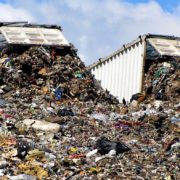Recycle, compose, or incinerate: Hawaii’s trash future
Hawaii County’s (Big Island) efforts to address a growing problem of what to do with its municipal solid waste started off with grand goals and public pronouncements of “recycle and reuse”, but the “Maximize Waste Reduction, Sustainability, also included Energy Production as a caveat ” With energy introduced as element of the RFP, all other sustainable waste management goals were quickly pushed aside in which all roads led to incineration.
The County’s RFP process eliminated all non-combustion waste management options “ …The County also wishes to maximize beneficial utilization of waste through production of energy…The Acceptable Technology must be the same thermodynamic, chemical, or mechanical design”.
With contradicting goals, the County RFP states how the Administration “…wishes to maximize beneficial utilization of waste through production of ENERGY, and to minimize social and environmental impacts.
The end disposal process for which Municipal Solid Waste is incinerated can only lead to production of significant levels of toxic air pollutants (emissions) to already endemic natural occurring (Kilauea-produced) air quality problems – VOG, a powerful respiratory irritant affecting all Hawaii residents.
Union of Concerned Scientists considers waste-to-energy (WTE) plants that burn raw municipal waste to NOT be a sustainable form of energy production. Waste-to-energy plants emit high levels of air pollution, including toxic metals, chlorinated compounds, and plastics.
No new MSW incineration plants have been built in the United States since 1995 – and for good reasons…


